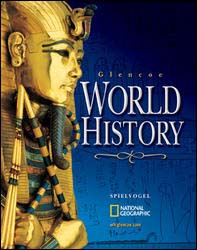Glencoe World HistoryChapter 8:
The Asian World, 400–1500Web Activity Lesson PlansIntroduction
Because the Mongols used force to gain power, it would be natural to assume that they relied primarily on force to rule. In this activity students will discover otherwise by reading about Marco Polo's observations in the court of Kublai Khan. Lesson Description
Students will go to the At the Court of Kublai Khan Web site to read about Marco Polo's account of Kublai Khan's China. While they are reading, students will create a list of 15 to 20 of Kublai Khan's policies and projects. After reading the selection, students will answer four questions about what they have read. They will then indicate whether each policy or project they have listed seems designed primarily to benefit Kublai Khan or his subjects. Instructional Objectives - Students will be able to interpret Kublai Khan's government policies and initiatives.
- Students will be able to assess Kublai Khan's policies and evaluate their usefulness.
Student Web Activity Answers - Messengers on horseback carried small objects from place to place. At checkpoints along the way, a horseman received a small plaque on which was written where he had come from and in which direction he was going. When he reached the next station, he presented his plaque and received another granting him permission to proceed. Marco Polo estimated that the system included 10,000 stations and at least 300,000 horses.
- According to Marco Polo, Kublai Khan's officials distributed 35,000 dishes of rice and barley to the poor. The government also built orphanages and provided destitute families with food and clothing.
- Marco Polo began as a visitor to China and became an advisor to Kublai Khan and an envoy to distant regions. He traveled as far as Burma, Korea, Tibet, and India and then reported to Kublai Khan on local conditions. Kublai Khan used this information to formulate policies for those regions.
- Marco Polo was especially impressed with the "Heavenly City" of Kinsai on the Yangtze River. According to Marco Polo, the city covered more than a hundred kilometers and had 1,600,000 families and 12,000 stone bridges. There were twelve guilds, each with 12,000 craftsmen's buildings, with 20 to 40 craftsmen working in each.
- The list of policies and projects that students select will vary, as will their responses to the second part of the activity. Policies and projects could range from Kublai Khan's tolerance and respect for various religions to the treatment of the poor and the organization of the courier system. The purpose of the second part of the activity is to encourage students to consider the motivations behind the ruler's decisions. In many cases, they may conclude that Kublai Khan was motivated both by a desire to improve the conditions of his subjects and to protect his own power.
 | 






